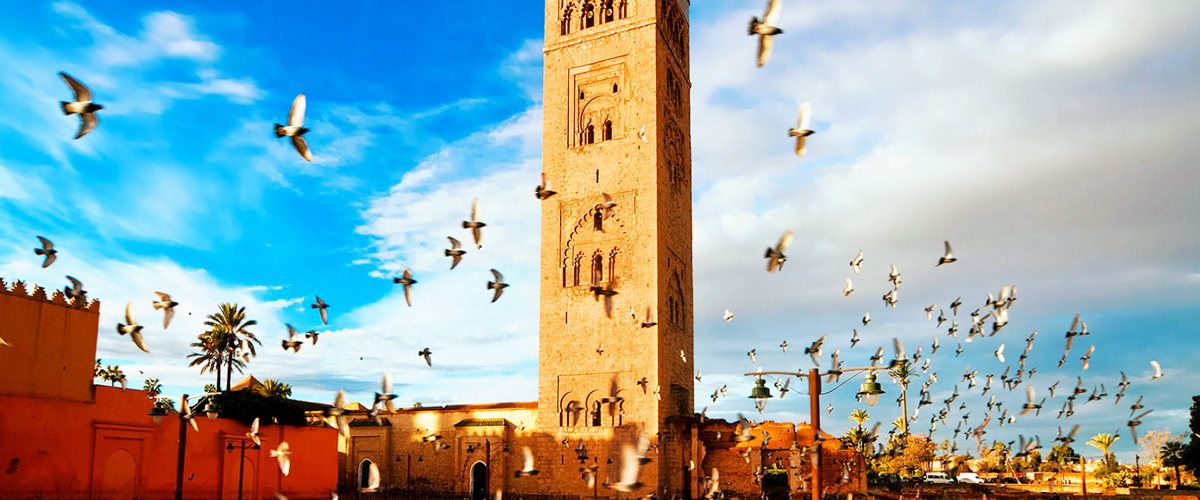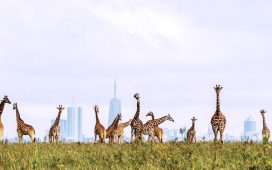Introduction
Marrakech, Morocco’s “Red City,” is a destination that enchants at first sight. Nestled at the foot of the Atlas Mountains, it is a place where time-honored traditions and modern vibrancy intertwine seamlessly. The city’s pink-hued walls glow at sunset, the medina’s narrow alleys pulse with life, and the air is heavy with the aromas of saffron, cumin, and freshly baked bread. Every sense is awakened here—whether by the colors of the bustling souks, the sound of the call to prayer, or the taste of a slow-cooked tagine. Marrakech is more than a city to visit; it’s an experience that lingers long after you leave.
History
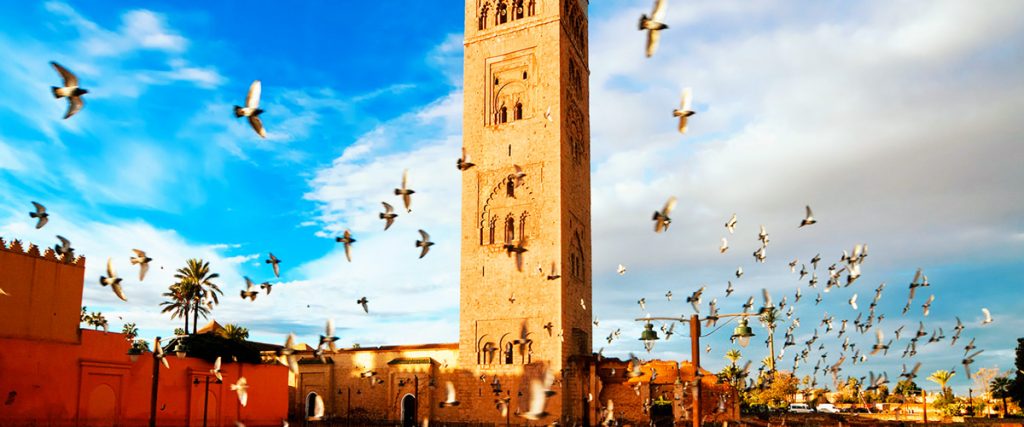
Marrakech’s story is as vivid as its landscapes and colors. Founded in the 11th century, the city was once a crossroads of trade between the Sahara and the Mediterranean, a meeting point for caravans loaded with salt, gold, and spices. Over the centuries, dynasties shaped its skyline with mosques, palaces, and gardens, weaving together Berber, Arab, and Andalusian influences. The legacy of these rulers still stands today, from the soaring minaret of the Koutoubia Mosque to the ornate Saadian Tombs. Exploring Marrakech is like stepping into a living timeline, where echoes of its imperial past continue to define its present.
Landmarks & Architecture
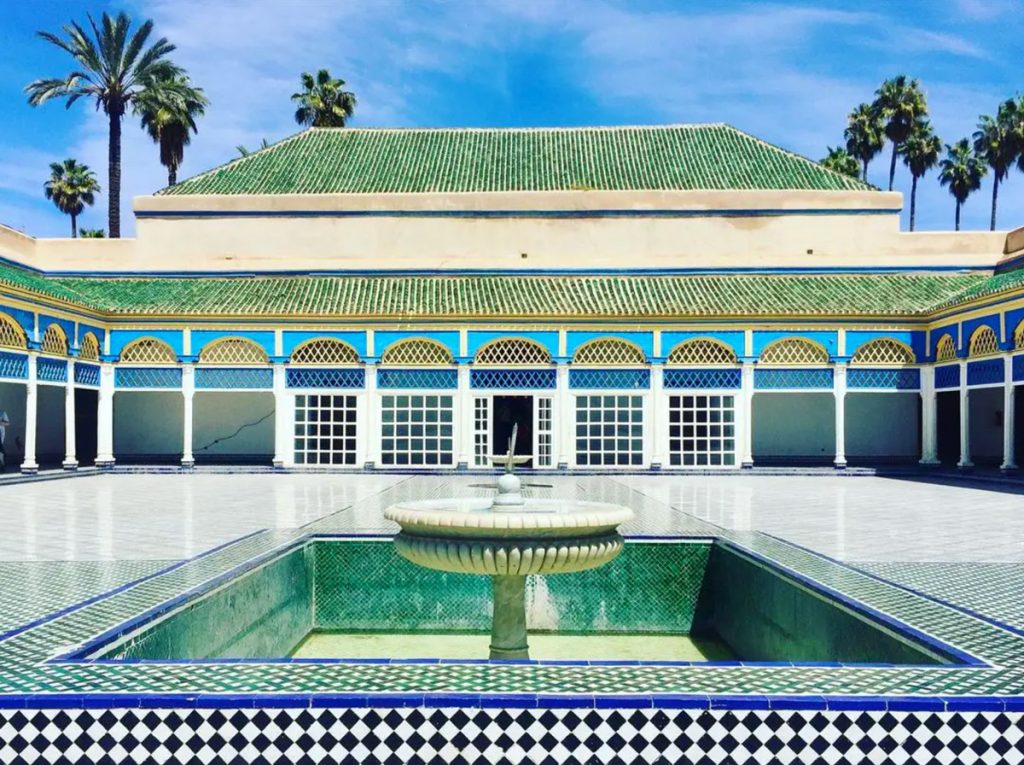
The architectural wonders of Marrakech reflect its diverse cultural roots and imperial legacy. Every landmark tells a story of artistry and devotion, blending intricate craftsmanship with timeless design. The red sandstone walls give the city its identity, while the hidden courtyards, tiled mosaics, and carved stucco interiors reveal its soul. From soaring minarets to serene palaces, Marrakech is a place where architecture is not just seen but felt—an immersive reminder of its centuries-old significance.
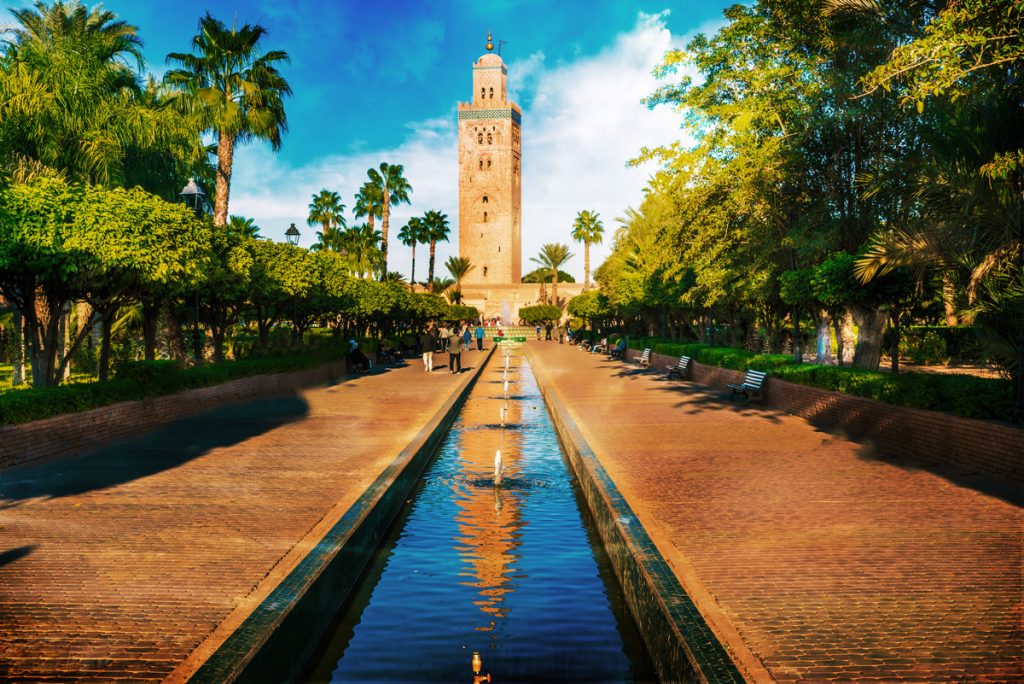
- Koutoubia Mosque – The city’s tallest structure and a quintessential example of Almohad architecture, its minaret is an unmissable symbol of Marrakech.
- Jemaa el-Fnaa – More than just a square, Jemaa el-Fnaa is Marrakech’s living theater. By day, it is home to juice vendors, snake charmers, and henna artists. By night, it transforms into a dazzling spectacle of food stalls, storytellers, musicians, and dancers, embodying the very soul of Marrakech.
- Ben Youssef Madrasa – Once the largest Islamic college in North Africa, showcasing exquisite stucco work and quiet inner courtyards.
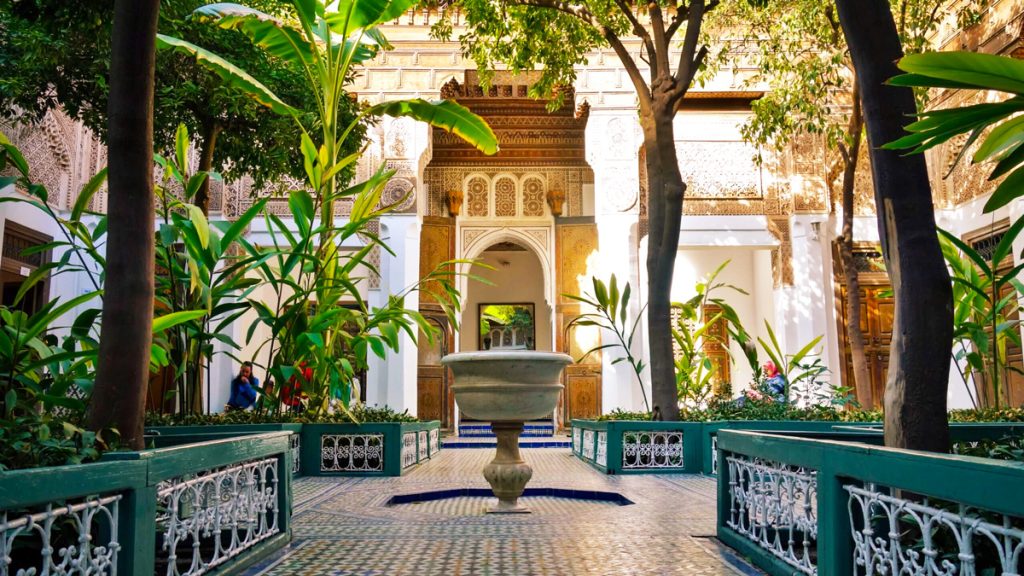
- Bahia Palace – A 19th-century masterpiece with intricately carved cedar wood, zellij tiles, and tranquil courtyards.
- El Badi Palace – Now in ruins but once a lavish fortress-palace, its vast courtyards still echo its grandeur.
- Saadian Tombs – Dating back to the 16th century, these ornate burial grounds reveal the opulence of the Saadian dynasty.


Museums & Culture
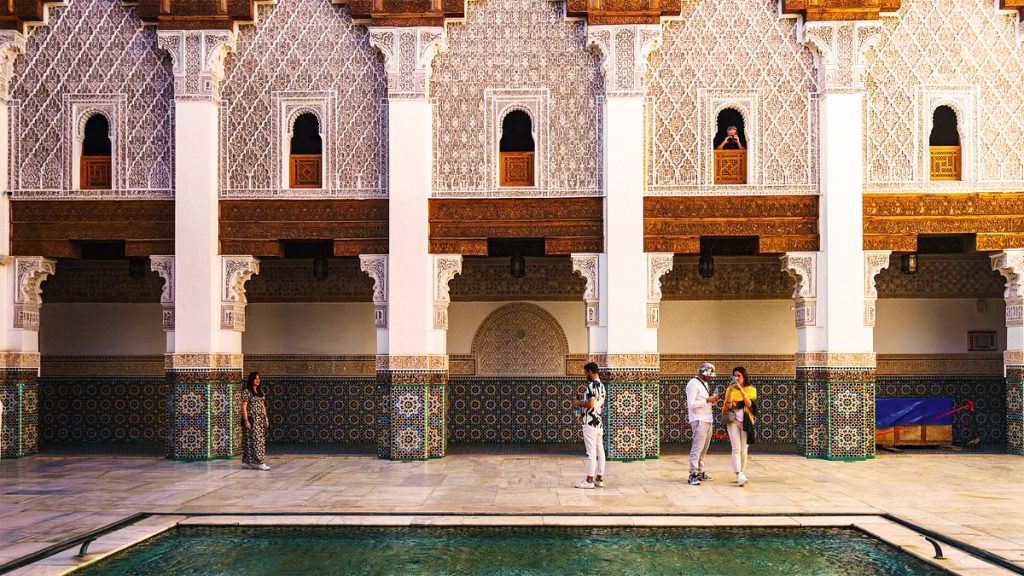
Culture in Marrakech is everywhere, from the chants in the mosques to the crafts in the souks, but its museums give structure to this living heritage. Each space offers a window into different layers of Moroccan identity—its artistry, history, and creative evolution. Walking through them is like moving from past to present, from the traditional skills of artisans to the cosmopolitan flair of fashion and design. For travelers eager to understand the city’s heart, these cultural institutions are essential.
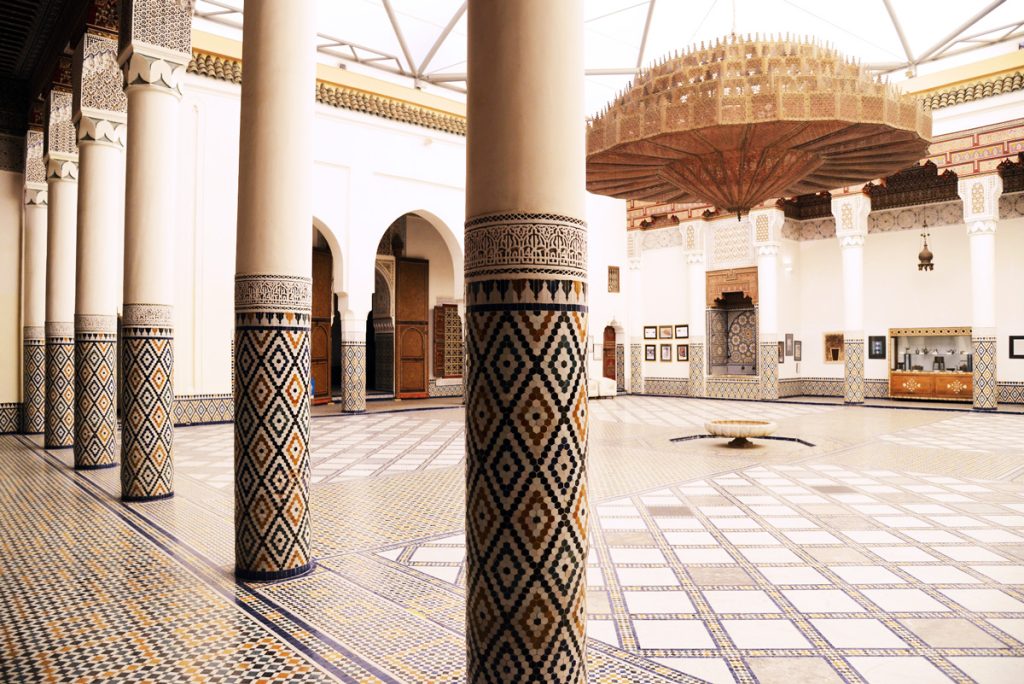
- Marrakech Museum – Located in a former palace, it blends contemporary art with traditional Moroccan craftsmanship.
- Maison de la Photographie – An intimate museum displaying early photography of Morocco from the late 19th and early 20th centuries.
- Dar Si Said Museum – Focused on Moroccan decorative arts, including jewelry, ceramics, and woodwork.
- Yves Saint Laurent Museum – A tribute to the designer’s love of Marrakech, featuring his fashion collections and creative inspirations.

Spotlight: Hot Air Balloon Flight
If the desert offers intimacy with the land, a hot air balloon flight offers the grandeur of Morocco from above. Rising before dawn, you’re transported to a launch site on the outskirts of Marrakech. As the balloon is prepared, the first light of morning begins to paint the horizon. Then, with a gentle lift, you ascend into the sky, leaving the earth and noise of the city behind.
From the basket, the views are nothing short of magical. To the east, the snow-capped Atlas Mountains stand tall, glowing pink and orange in the rising sun. Below, a patchwork of Berber villages, olive groves, and winding trails unfolds like a living tapestry. The medina’s minarets are just visible in the distance, reminding you of the city you left only an hour ago.
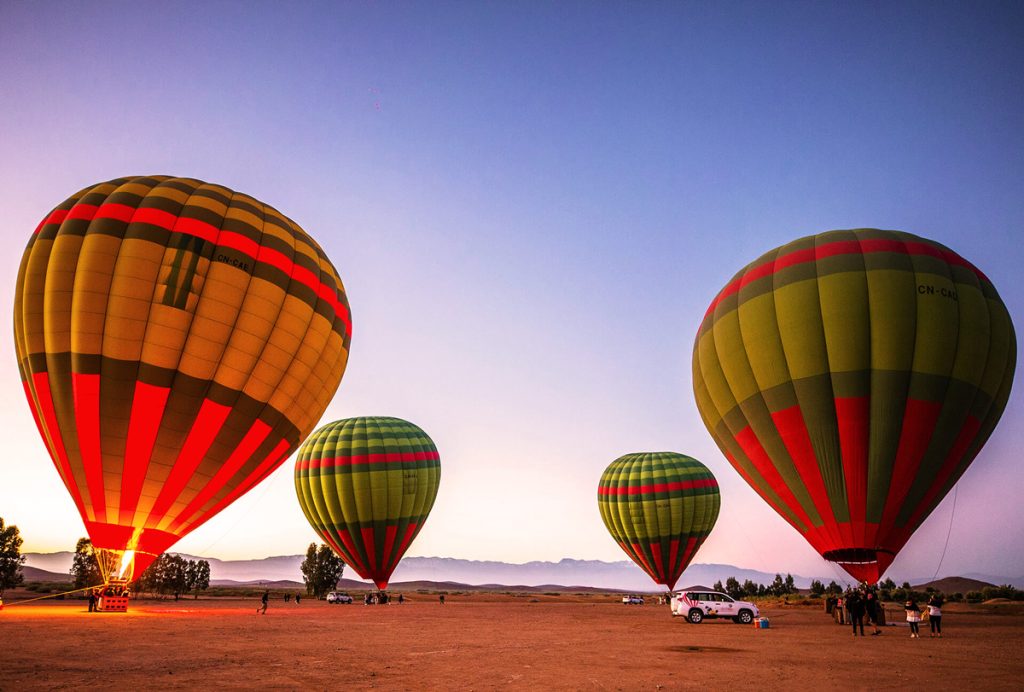
The experience is both peaceful and exhilarating. There’s no engine noise, only the occasional roar of the flame as the balloon climbs higher. The silence makes it easy to appreciate the vastness of the landscape and the sheer beauty of the natural world. Many flights include a celebratory breakfast afterward, often served in a Berber tent, making the morning feel both adventurous and intimate.
For many travelers, this flight becomes the highlight of their time in Marrakech. It’s not just about the views, but about the perspective—seeing Morocco from above reminds you of its scale, its diversity, and its timeless charm. Floating high above the desert and mountains, with the world stretching endlessly beneath you, is the very definition of awe.

Hidden Gems
Beyond the postcard sights, Marrakech has a quieter, more intimate side that rewards those who linger and look deeper. Away from the noise of Jemaa el-Fnaa and the main thoroughfares, you’ll find tranquil gardens, rooftop havens, and traditional workshops where time slows down. These hidden treasures offer moments of serenity and authenticity, giving you a sense of the Marrakech that locals treasure and visitors often overlook.

- Le Jardin Secret – A beautifully restored garden oasis hidden behind Medina walls.
- Terrace Cafés – Tucked above the souks, these rooftop escapes offer mint tea and panoramic Medina views.
- Tanneries District – Less visited than Fes’s, but an authentic window into Morocco’s ancient leather-dyeing tradition.
- Ensemble Artisanal – A cooperative where local artisans sell authentic crafts at fair prices, away from bargaining chaos.

Food & Dining

Food in Marrakech is not simply about eating—it’s about community, tradition, and sensory pleasure. The city’s cuisine is a fusion of Berber, Arabic, Mediterranean, and even French influences, creating flavors that are both comforting and exotic. Every meal is an event, often slow-cooked, richly spiced, and shared generously. From opulent palace-style dinners to smoky street food stalls, Marrakech’s dining scene captures the essence of Morocco in every bite.
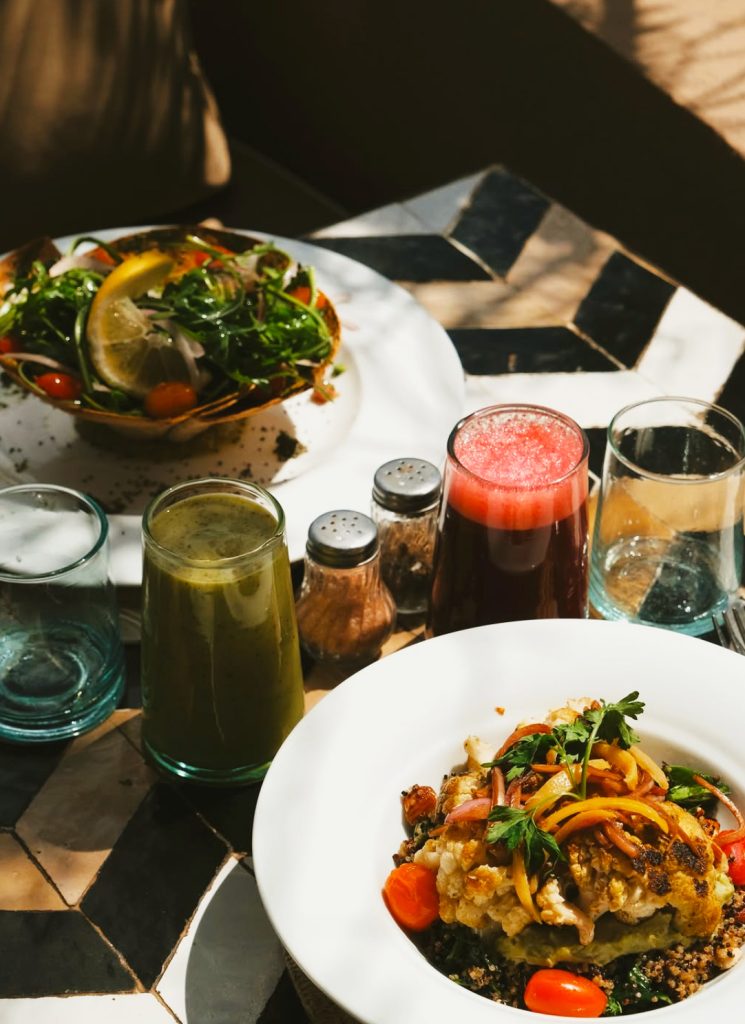
- Nomad – A chic rooftop restaurant serving modern takes on Moroccan classics.
- Street Food in Jemaa el-Fnaa – From sizzling merguez sausages to freshly squeezed orange juice, the square comes alive at night with open-air food stalls.
- Al Fassia – Renowned for its all-female kitchen and authentic family recipes.
- Dar Yacout – A traditional palace-style dining experience with multi-course Moroccan feasts.

Day Trips
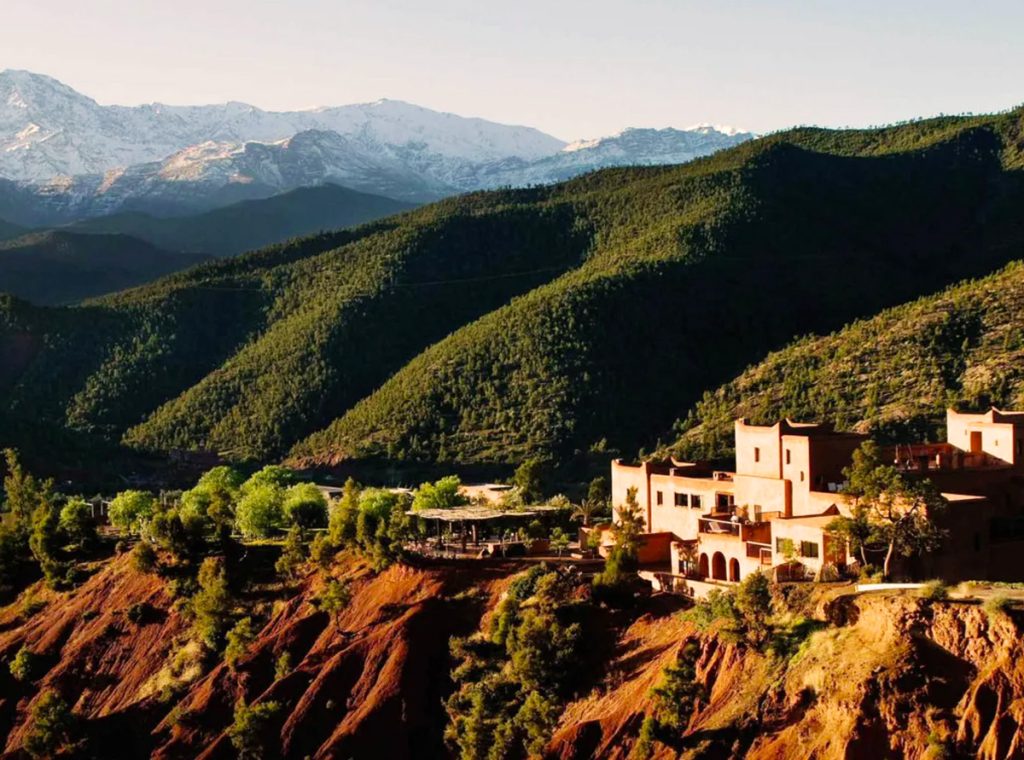
One of Marrakech’s greatest charms is that it serves as a gateway to Morocco’s breathtaking landscapes. Within just a few hours, you can go from bustling medinas to soaring mountain peaks, lush valleys, and windswept coastlines. These day trips extend the Marrakech experience beyond the city walls, offering a deeper understanding of the country’s natural beauty and cultural diversity.
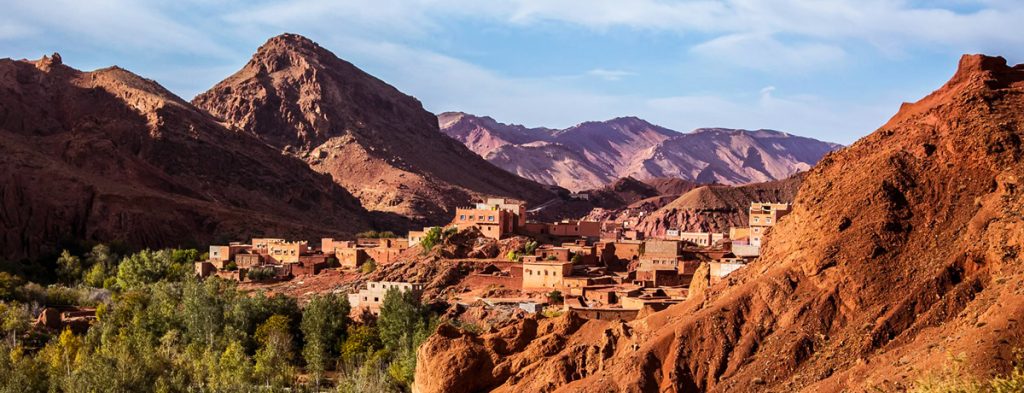
- Atlas Mountains – Just an hour away, offering hikes, Berber villages, and breathtaking mountain scenery.
- Ourika Valley – A lush escape with waterfalls and traditional souks.
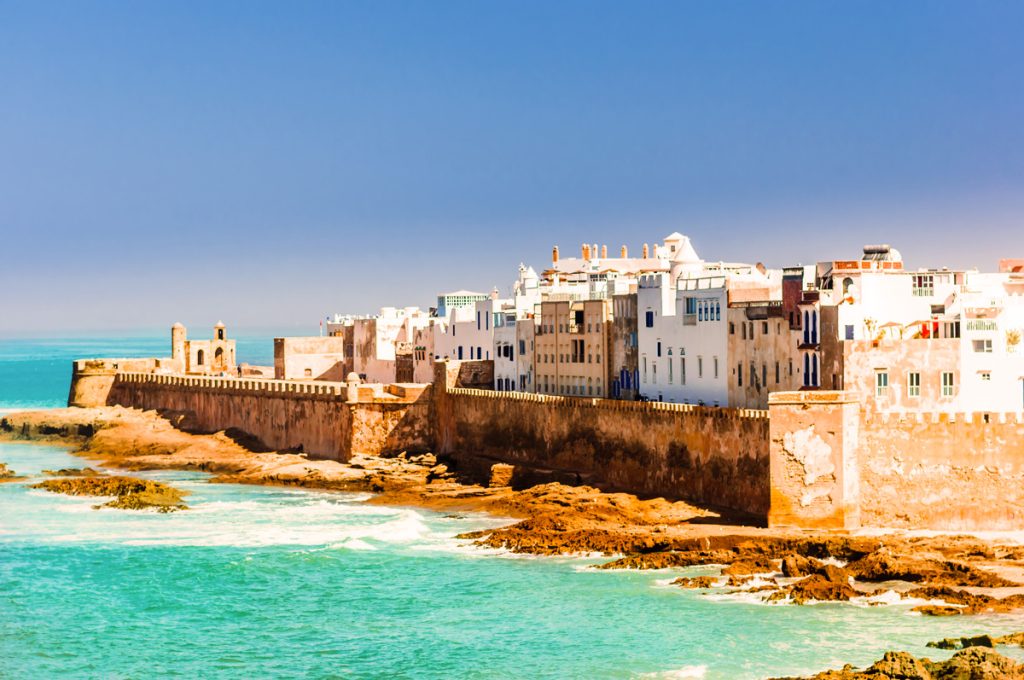
- Essaouira – A coastal town known for its whitewashed walls, seafood, and laid-back vibe.
- Agafay Desert – A rocky desert outside Marrakech where you can ride camels, stargaze, or stay in luxury desert camps.
- Ouzoud Waterfalls – One of Morocco’s natural wonders, these cascading falls are surrounded by lush greenery and curious monkeys, making for a refreshing day trip.

Spotlight: Camel Desert Tour
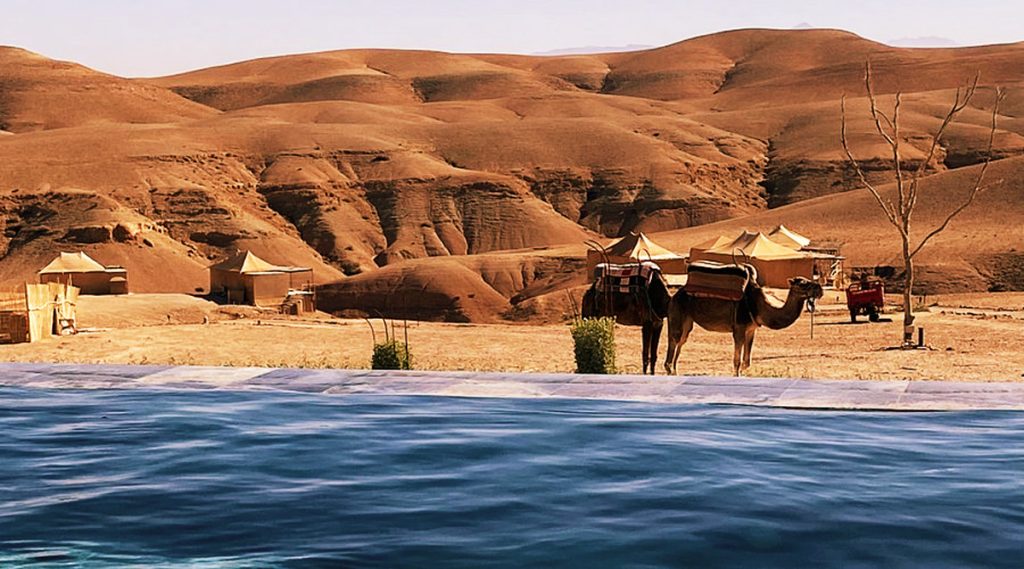
Few experiences capture the essence of Morocco like riding a camel across the desert at sunset. Just outside Marrakech lies the Agafay Desert, a rocky yet beautiful landscape that offers the feeling of the Sahara without the long journey south. As you climb onto the back of a camel, the swaying motion sets the rhythm for a slow, contemplative ride through the dunes.
During these tours, time seems to stand still. The desert stretches endlessly in front of you, shifting colors as the sun drops lower in the sky. Golden hues wash over the land, shadows grow longer, and the silence is broken only by the sound of camel steps and the occasional desert breeze. Many tours end at a traditional Berber tent, where guests are welcomed with mint tea and fresh bread, offering a glimpse into the warmth of Moroccan hospitality.
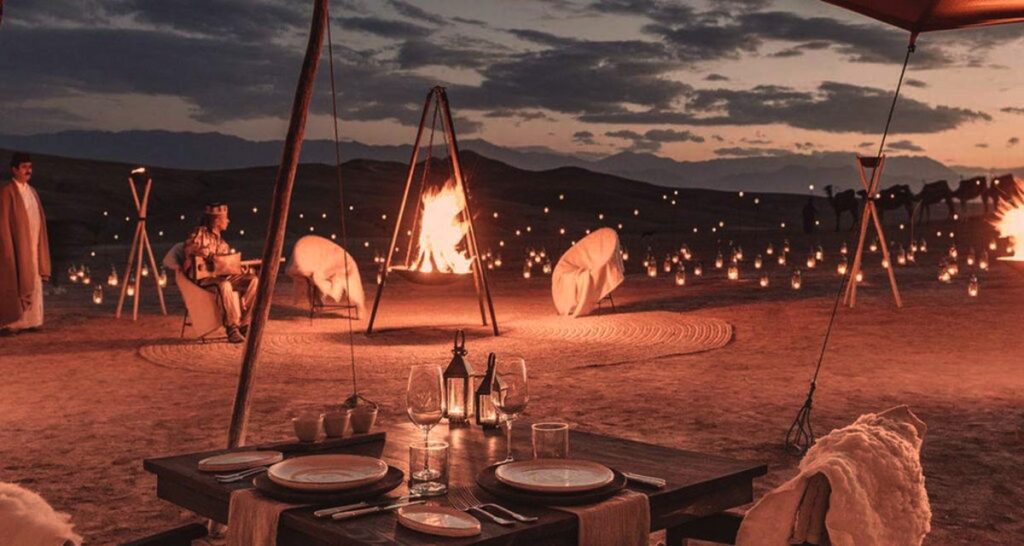
For those who want more than just an evening ride, multi-day tours are available. These journeys take you deeper into the desert, where nights are spent under star-filled skies far from the glow of city lights. Sitting around a fire, listening to Berber music, and sharing food under the Milky Way is an unforgettable experience that connects travelers to Morocco’s nomadic roots.
Whether you choose a short sunset ride or an extended adventure, a camel tour is a way of slowing down, embracing the landscape, and experiencing Morocco the way travelers did centuries ago.
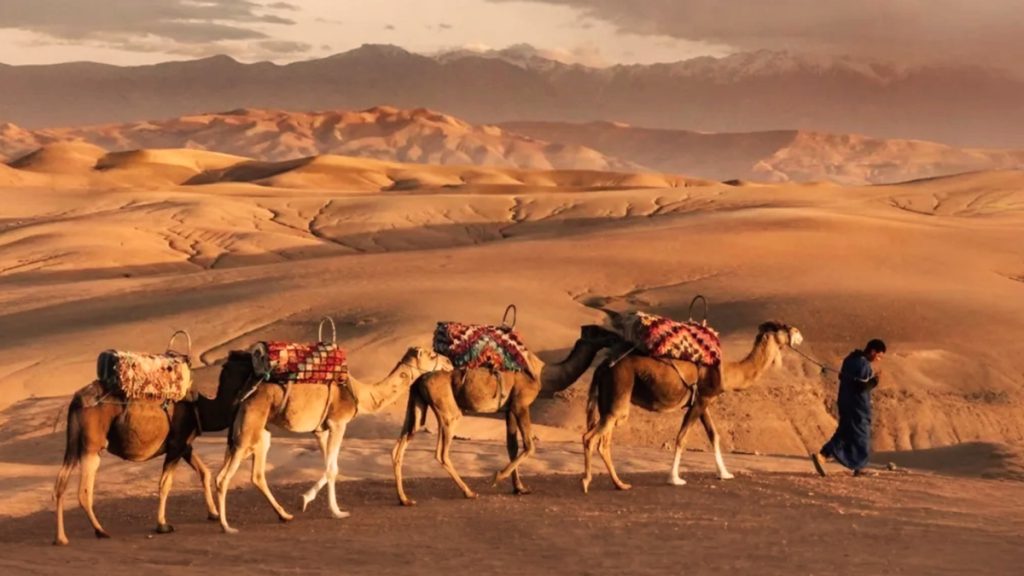
Where to Stay
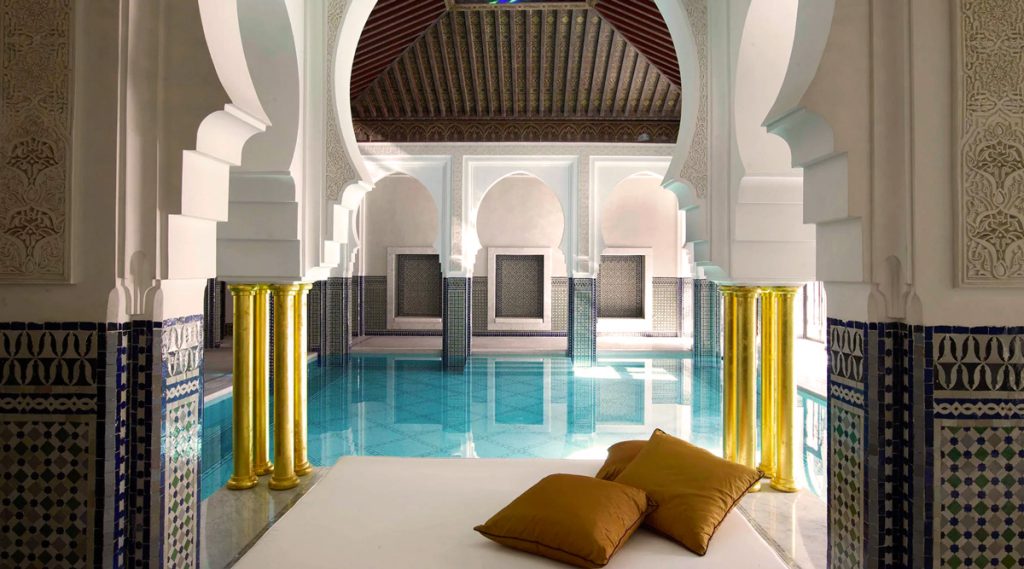
Finding the right place to stay in Marrakech is part of the adventure, and the city offers options for every budget. From intimate riads hidden in the medina to opulent resorts on the city’s edge, accommodation here is as much about atmosphere as comfort.
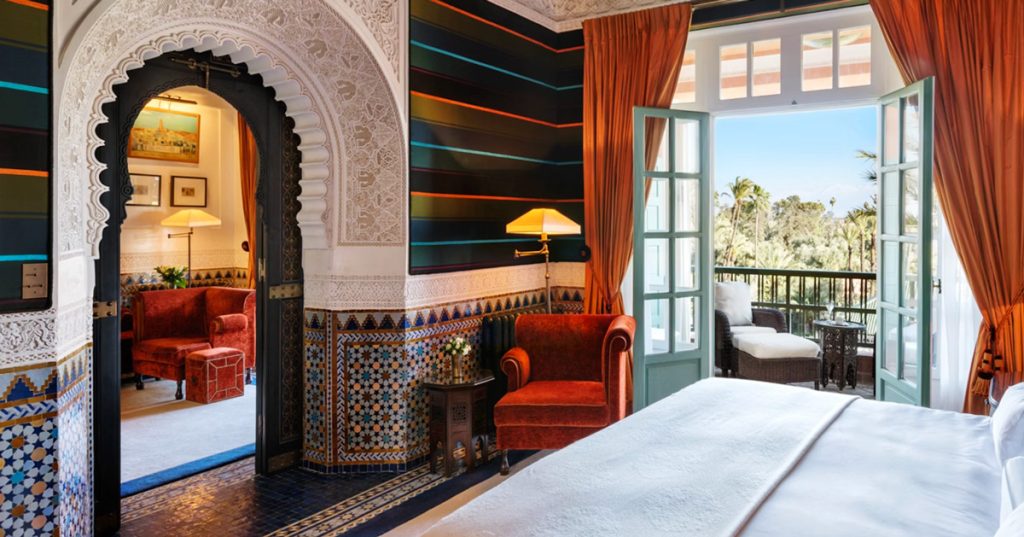
- Luxury: La Mamounia – One of the world’s most famous hotels, combining Moroccan elegance with lavish gardens, pools, and world-class service.
- Mid-Range: Riad Kniza – Family-run and warmly welcoming, this restored riad offers authenticity with modern comfort.
- Budget: Riad Dia – A lively, colorful hostel with traditional décor and a rooftop terrace perfect for meeting fellow travelers.
- Desert Luxury Camp: Scarabeo Camp – Set in the Agafay Desert just outside Marrakech, this boutique desert camp blends adventure with luxury. Guests stay in stylish canvas tents with Berber rugs, lanterns, and full comfort while enjoying starry nights, gourmet meals, and the dramatic backdrop of the Atlas Mountains.
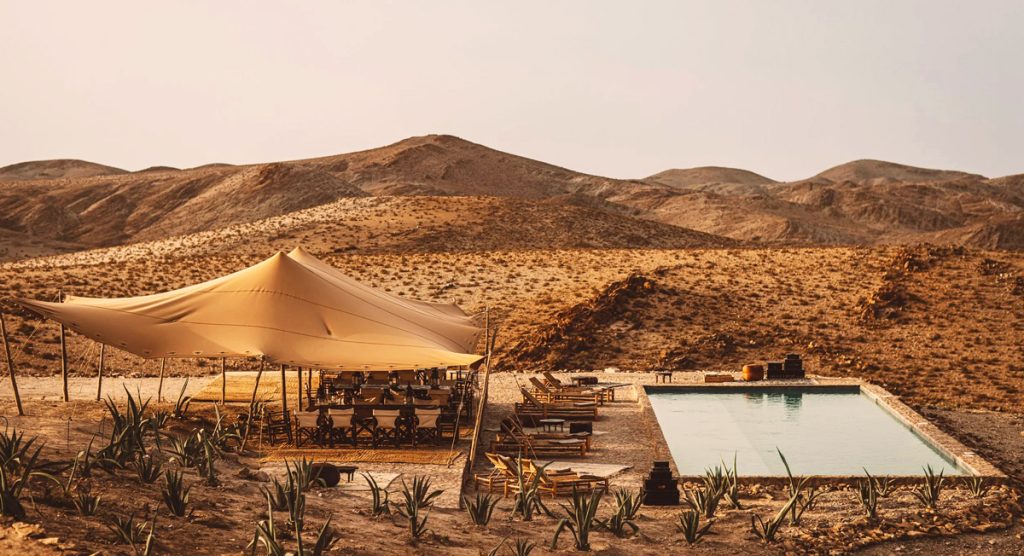
Practical Tips
Marrakech can feel overwhelming, but a few insider tips will help you embrace its energy rather than be swept away by it. The city is best enjoyed when you balance exploration with relaxation, diving into the medina’s chaos but also retreating into its calm riads and gardens. Small details—like timing your souk visits, dressing respectfully, or knowing when to haggle—can make the difference between feeling like a tourist and truly experiencing the city.
- When to Visit: Spring (March–May) and autumn (September–November) offer the most pleasant weather. Summers can be scorching.
- Getting Around: Walking is the best way to navigate the Medina; taxis are plentiful but negotiate fares beforehand.
- Currency: Moroccan Dirham (MAD). Cash is essential in souks.
- Dress Code: Respect local customs with modest attire, especially in religious sites.
- Shopping Tip: Bargaining in the souks is expected—think of it as part of the cultural experience.
Final Thoughts
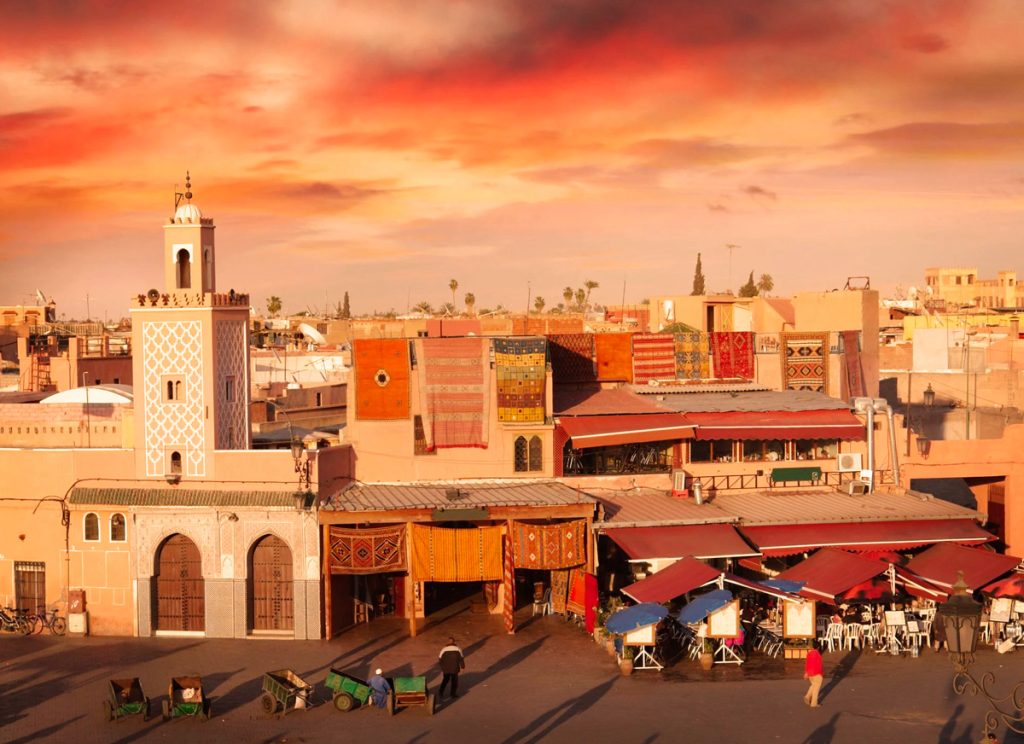
Marrakech is a city that seduces the senses at every turn, a place where tradition and modernity coexist in dazzling harmony. Its history whispers through its palaces, its flavors linger on the tongue, and its vibrant energy leaves a lasting impression. Whether you lose yourself in the souks, marvel at intricate mosaics, ride a camel at sunset, or drift above the Atlas Mountains in a balloon, Marrakech is more than a destination—it is a journey into Morocco’s soul.

